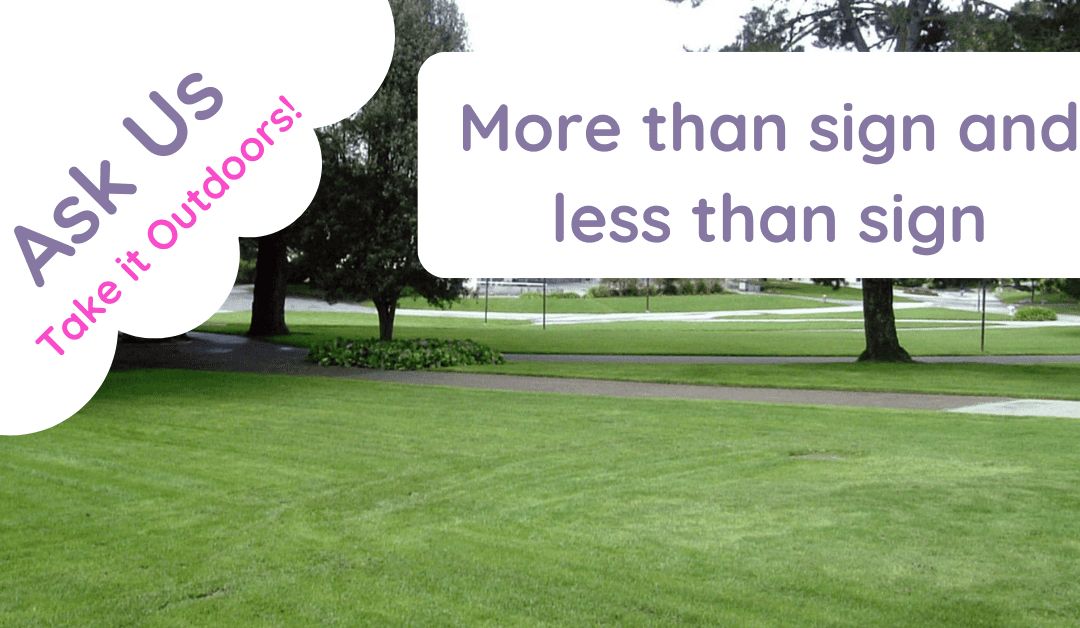Teaching the More Than and Less Than Signs: Engaging Children in Math
Understanding mathematical symbols is crucial for young learners as they build their foundational math skills. Two essential symbols that children need to grasp early on are the more than (>) and less than (<) signs. Teaching these concepts in a fun and interactive way can make learning math enjoyable and effective. This blog post explores various methods and activities to help children understand and use the more than and less than signs, with a focus on engaging, hands-on learning.
Understanding the More Than and Less Than Signs
The more than (>) and less than (<) signs are used to compare two numbers or quantities. The open end of the symbol always faces the larger number, while the pointed end faces the smaller number. A simple way to remember this is to think of the symbol as a hungry alligator that always wants to eat the bigger number.
1. More Than (>)
The symbol “>” means that the number on the left is greater than the number on the right. For example, 5 > 3 means that 5 is greater than 3. External Resource: Math is Fun – More Than Sign Internal Resource: Muddy Puddle Teacher – Comparing Numbers Activities
2. Less Than (<)
The symbol “<” means that the number on the left is smaller than the number on the right. For example, 2 < 4 means that 2 is less than 4. External Resource: Khan Academy – Less Than Sign
The Crocodile Method for Teaching More Than and Less Than
Teaching children the concepts of “more than” and “less than” can be made fun and memorable with the Crocodile Method. This method uses a simple and engaging visual metaphor: a hungry crocodile that always wants to eat the larger number. This approach helps children easily grasp the directionality of the more than (>) and less than (<) signs by associating them with something familiar and enjoyable.
Understanding the Crocodile Method
The basic idea is to use a crocodile’s open mouth to represent the greater than (>) and less than (<) signs. The crocodile’s mouth always opens towards the larger number because it wants to eat the most food.
1. More Than (>)
When comparing two numbers, the open mouth of the crocodile faces the larger number, showing that it is “more than” the other number. For example, 5 > 3 can be visualized as the crocodile’s mouth open towards the 5.
2. Less Than (<)
Similarly, when comparing two numbers, the open mouth of the crocodile faces the larger number, but from the other direction, showing that it is “less than” the other number. For example, 2 < 4 can be visualized as the crocodile’s mouth open towards the 4.
How to Teach the Crocodile Method
Here are some engaging activities to teach the Crocodile Method to children:
1. Crocodile Craft Activity
Materials Needed: Construction paper, googly eyes, scissors, glue. Activity: Have children create their own crocodile mouths using construction paper. Attach googly eyes to make it fun. Use these crocodiles to compare pairs of numbers. External Resource: Simple Crocodile Craft Internal Resource: Muddy Puddle Teacher – Hands-On Math Activities
2. Crocodile Math Game
Materials Needed: Number cards, crocodile mouth cutouts. Activity: Spread out number cards on the ground. Children use the crocodile mouth cutouts to “eat” the larger number when comparing two cards. External Resource: Number Card Games
3. Crocodile Story Time
Materials Needed: Storybook about crocodiles or a custom story involving a crocodile character. Activity: Read a story involving a hungry crocodile that always wants to eat the bigger number. Pause the story to compare numbers using the crocodile’s mouth. External Resource: Interactive Math Stories
4. Outdoor Crocodile Hunt
Materials Needed: Number cards, crocodile cutouts, outdoor space. Activity: Hide number cards around an outdoor area. Children find the cards and use their crocodile cutouts to compare the numbers they find. External Resource: Outdoor Math Activities
Reinforcing the Concept with Everyday Examples
1. Snack Time Comparisons
Activity: Use snacks to compare quantities. For example, “Does the crocodile want to eat the pile with 5 crackers or 3 crackers?” This helps reinforce the concept in a real-world context. External Resource: Learning with Snacks
2. Classroom Jobs
Activity: Use the crocodile method to compare tasks or items during classroom activities. For instance, “Who has more pencils? Who has less paper?” External Resource: Classroom Management Tips
Digital Tools and Resources
1. Interactive Online Games
Activity: Use online games and apps designed to teach the crocodile method. These interactive tools can make learning fun and engaging. External Resource: Topmarks – More and Less Games
2. Educational Videos
Activity: Show educational videos that explain the crocodile method using animations and stories. Visual aids can help children better understand and remember the concept. External Resource: YouTube – Greater Than Less Than Videos
Recommended Resources from Muddy Puddle Teacher
To support teaching the crocodile method, Muddy Puddle Teacher offers a variety of resources:
- Hands-On Math Activities
- Outdoor Learning Guides
- Math Activities
- Storytelling Techniques
- Outdoor Math Activities
Conclusion
The Crocodile Method is an engaging and effective way to teach children the concepts of “more than” and “less than.” By incorporating fun activities, crafts, and interactive games, educators can make learning these mathematical symbols enjoyable and memorable. Whether through storytelling, outdoor hunts, or digital tools, the crocodile method helps children grasp these important concepts with ease. Embrace this creative approach and watch your children develop a strong understanding of more than and less than signs.
Fun Activities to Teach More Than and Less Than Signs
1. Alligator Game
Activity: Create alligator mouths using construction paper. Children use the alligator mouths to compare numbers, placing the open end towards the larger number. External Resource: PBS Kids – Alligator Math Game Internal Resource: Muddy Puddle Teacher – Hands-On Math Activities
2. Number Line Jumps
Activity: Draw a number line on the ground using chalk. Call out pairs of numbers, and children jump to the correct positions on the number line to compare them. External Resource: Scholastic – Number Line Activities Internal Resource: Muddy Puddle Teacher – Outdoor Learning Guides
3. More or Less Nature Hunt
Activity: Take children on a nature hunt to collect various items like leaves, rocks, or flowers. Compare quantities using the more than and less than signs. External Resource: Nature Hunt Ideas Internal Resource: Muddy Puddle Teacher – Outdoor Math Activities
4. Interactive Math Story
Activity: Create a story involving characters that compare quantities. Children can act out the story, using props to demonstrate more than and less than relationships. External Resource: Interactive Math Stories Internal Resource: Muddy Puddle Teacher – Storytelling Techniques
5. Greater Than and Less Than Craft
Activity: Use craft sticks and googly eyes to create greater than and less than signs. Children can decorate the signs and use them in comparison activities. External Resource: Math Craft Ideas
Incorporating More Than and Less Than Signs in Daily Activities
1. Classroom Jobs
Activity: Assign classroom jobs using more than and less than comparisons. For example, “Who has more pencils? Who has less paper?” This reinforces the concept throughout the day. External Resource: Classroom Management Tips
2. Snack Time Comparison
Activity: During snack time, compare quantities of different snacks. “Do you have more crackers or less fruit?” Use the symbols to make comparisons. External Resource: Learning During Snack Time
3. Weather Chart
Activity: Create a weather chart that compares daily temperatures. Use more than and less than signs to compare the temperatures over the week. External Resource: Weather Activities for Kids
Enhancing Learning with Technology
1. Interactive Online Games
Activity: Use online games and apps that focus on comparing numbers using more than and less than signs. These interactive tools can reinforce learning through play. External Resource: Topmarks – More and Less Games
2. Digital Storybooks
Activity: Read digital storybooks that incorporate math concepts. Children can follow along and interact with the stories, comparing numbers as they read. External Resource: Interactive Storybooks
Recommended Resources from Muddy Puddle Teacher
To support learning about the more than and less than signs, Muddy Puddle Teacher offers a variety of resources:
- Comparing Numbers Activities
- Hands-On Math Activities
- Outdoor Learning Guides
- Outdoor Math Activities
- Storytelling Techniques
Conclusion
Teaching children the more than and less than signs is an essential part of their early math education. By using engaging and interactive activities, educators can make learning these concepts enjoyable and memorable. Whether through outdoor activities, crafts, or technology, there are numerous ways to reinforce the understanding of more than and less than in everyday situations. Embrace these fun and practical methods to help children master these important mathematical symbols.


